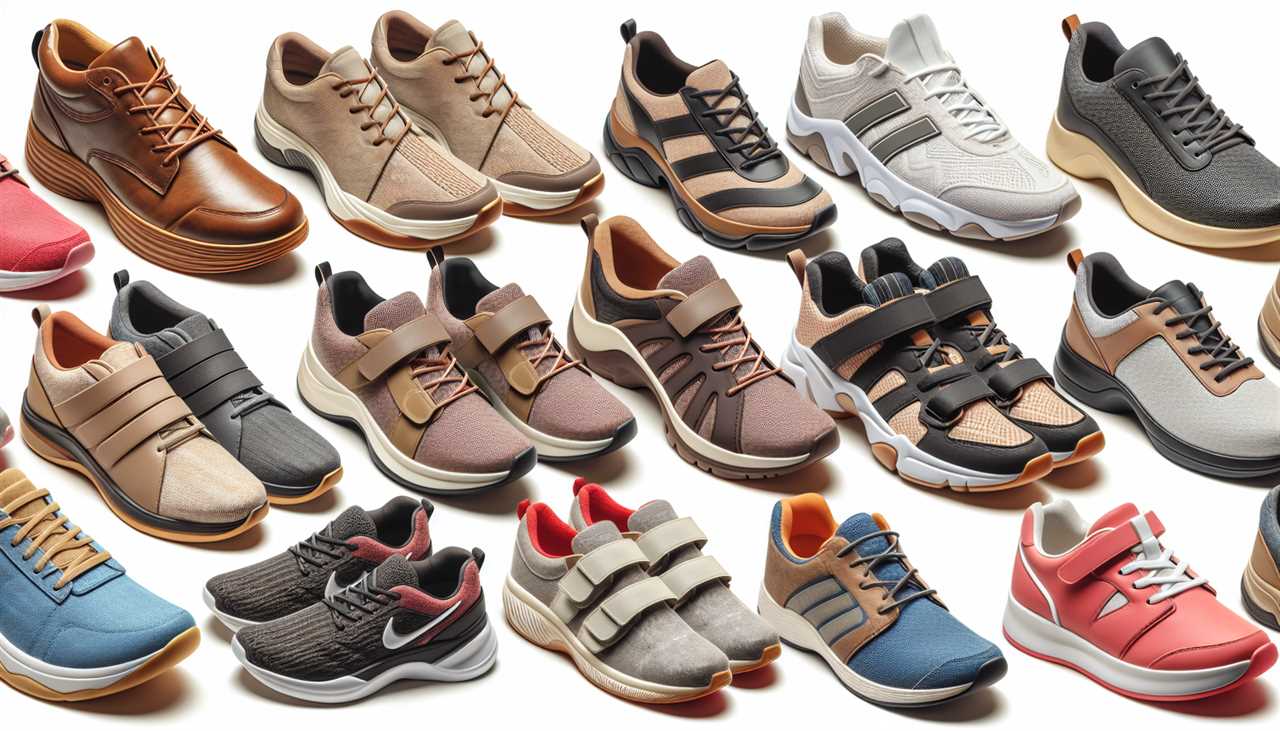Health
Stride in Style: Arthritis-Friendly Shoes That Blend Comfort and Support
Arthritis-friendly footwear is essential for those with joint pain, providing comfort, support, and style to maintain mobility. Specialized shoes alleviate

Article Summary
Understanding the Importance of Arthritis-Friendly Footwear
We know that living with arthritis can be challenging, especially when it comes to finding the right shoes. Arthritis-friendly footwear is not just a luxury; it’s a necessity for those dealing with joint pain and inflammation. These specialized shoes are designed to provide the perfect balance of comfort, support, and style, allowing individuals with arthritis to maintain their mobility and independence.
When we talk about arthritis-friendly shoes, we’re referring to footwear that addresses the specific needs of people with arthritis. These shoes are crafted with features that alleviate pressure on sensitive joints, reduce pain, and improve overall foot health. The right pair of shoes can make a world of difference in your daily life, enabling you to walk, stand, and move with greater ease and confidence.
Key Features of Arthritis-Friendly Shoes
Arthritis-friendly shoes are characterized by several essential features that set them apart from regular footwear. Let’s take a closer look at what makes these shoes so beneficial for individuals with arthritis:
1. Exceptional Comfort: The primary goal of arthritis-friendly shoes is to provide unparalleled comfort. These shoes often feature soft, cushioned insoles that absorb shock and reduce pressure on painful joints. The interior lining is typically made from breathable materials that prevent irritation and keep your feet cool and dry.
2. Superior Support: Proper support is crucial for managing arthritis symptoms. Arthritis-friendly shoes are designed with sturdy soles and robust arch support to promote proper alignment and reduce strain on your feet, ankles, and knees. This support helps distribute your body weight evenly, minimizing stress on specific areas.
3. Enhanced Cushioning: Extra cushioning in the heel and forefoot areas is a hallmark of arthritis-friendly footwear. This feature helps absorb impact during walking or standing, reducing the jarring effect on your joints. The cushioning also provides a soft, comfortable base for your feet, making each step more pleasant.
4. Optimal Flexibility: While support is essential, arthritis-friendly shoes also need to be flexible enough to accommodate natural foot movement. The right balance of flexibility allows your feet to move comfortably without putting unnecessary strain on your joints.
5. Therapeutic Design: Many arthritis-friendly shoes incorporate therapeutic elements in their design. This may include features like rocker soles that promote a smoother gait, or pressure-relieving insoles that distribute weight away from sensitive areas.
6. Orthopedic Considerations: Orthopedic principles are often applied in the construction of arthritis-friendly footwear. These shoes may have wider toe boxes to accommodate swollen feet, adjustable closures for a customized fit, and removable insoles that can be replaced with custom orthotics if needed.
The Benefits of Wearing Arthritis-Friendly Shoes
Investing in arthritis-friendly footwear can yield numerous benefits for individuals dealing with joint pain and inflammation. Here are some of the advantages you can expect:
1. Pain Relief: The most immediate benefit of arthritis-friendly shoes is the reduction in foot, ankle, and knee pain. By providing proper support and cushioning, these shoes help alleviate pressure on painful joints, making walking and standing more comfortable.
2. Improved Mobility: With reduced pain comes increased mobility. Arthritis-friendly shoes enable you to move more freely and confidently, encouraging you to stay active and maintain a healthy lifestyle.
3. Better Posture: The support provided by arthritis-friendly shoes promotes proper alignment of your feet, ankles, and knees. This, in turn, can lead to improved overall posture, potentially reducing pain in other areas of your body, such as your back and hips.
4. Increased Stability: Many arthritis-friendly shoes feature slip-resistant soles and supportive designs that enhance stability. This can help reduce the risk of falls, which is particularly important for individuals with compromised joint function.
5. Enhanced Comfort Throughout the Day: Whether you’re running errands, working, or enjoying leisure activities, arthritis-friendly shoes keep your feet comfortable for extended periods. This can help you stay on your feet longer and participate more fully in daily activities.
6. Prevention of Further Joint Damage: By providing proper support and reducing stress on your joints, arthritis-friendly shoes can help slow the progression of joint damage associated with arthritis.
Choosing the Right Arthritis-Friendly Shoes
Selecting the perfect pair of arthritis-friendly shoes requires careful consideration. Here are some tips to help you make the best choice:
1. Consult a Professional: Before purchasing arthritis-friendly shoes, it’s wise to consult with a podiatrist or orthopedic specialist. They can assess your specific needs and recommend features that will benefit you most.
2. Try Before You Buy: Always try on shoes before making a purchase. Walk around in them to ensure they provide the right level of comfort and support. Remember that your feet may swell throughout the day, so try on shoes later in the afternoon when your feet are at their largest.
3. Look for Adjustability: Shoes with adjustable features like Velcro straps or laces allow you to customize the fit, which is particularly helpful if you experience swelling or changes in foot size.
4. Consider Your Activities: Think about the activities you typically engage in and choose shoes that are appropriate for those tasks. You may need different shoes for different purposes, such as walking shoes for exercise and dress shoes for work.
5. Don’t Sacrifice Style: While comfort and support are paramount, you don’t have to compromise on style. Many brands now offer arthritis-friendly shoes in a variety of attractive designs, allowing you to look good while feeling great.
6. Break Them In Gradually: Even the best arthritis-friendly shoes may need a breaking-in period. Wear them for short periods initially and gradually increase the duration to allow your feet to adjust.
Caring for Your Arthritis-Friendly Shoes
To ensure your arthritis-friendly shoes continue to provide optimal comfort and support, proper care is essential. Here are some tips for maintaining your footwear:
1. Rotate Your Shoes: Avoid wearing the same pair of shoes every day. Rotating between two or more pairs allows each pair to dry out completely between wears, extending their lifespan.
2. Clean Regularly: Keep your shoes clean by wiping them down with a damp cloth and mild soap. For leather shoes, use a leather cleaner and conditioner to maintain the material’s quality.
3. Replace When Necessary: Even the best arthritis-friendly shoes will wear out over time. Replace your shoes when you notice signs of wear, such as compressed cushioning or worn-out soles.
4. Store Properly: Store your shoes in a cool, dry place away from direct sunlight to prevent material degradation.
5. Use Shoe Trees: For dress shoes, use shoe trees to help maintain their shape and absorb moisture.
By following these care instructions, you can extend the life of your arthritis-friendly shoes and ensure they continue to provide the comfort and support you need.
In conclusion, arthritis-friendly footwear plays a crucial role in managing arthritis symptoms and improving quality of life for those affected by this condition. By prioritizing comfort, support, and therapeutic design, these shoes enable individuals with arthritis to maintain their mobility, reduce pain, and stride confidently through life. Remember, the right pair of shoes can make all the difference in your daily comfort and overall well-being.

Hey there! I’m William Cooper, your go-to guy for all things travel at iMagazineDaily. I’m 39, living the dream in Oshkosh, WI, and I can’t get enough of exploring every corner of this amazing world. I’ve got this awesome gig where I blog about my travel escapades, and let me tell you, it’s never a dull moment! When I’m not busy typing away or editing some cool content, I’m out there in the city, living it up and tasting every crazy delicious thing I can find. Join me on this wild ride of adventures and stories, right here at iMagazineDaily. Trust me, it’s going to be a blast! 🌍✈️🍴






You must be logged in to post a comment Login